active projects
real-time FM radio demodulation with Ettus E310 USRP

The purpose of this project was to use the USRP E310 Software Defined Radio (SDR) platform to implement a real-time FM demodulator, testing primarily with radio signals. This was done in C++, utilizing the UHD drivers that Ettus Research has provided. The E310 receives a block of samples, which it downconverts, then processes. Once the block of samples is processed, it is output to the system using the ALSA library. In order to confirm real-time operation, the Boost C++ libraries were used. The completion of this project acts as a springboard, allowing the team to develop more complicated projects using the USRP E310.
resource allocation for cooperative transmission
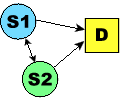
We are investigating the problem of how cooperating sources should efficiently allocate energy to achieve QoS targets at an intended destination while also maintaining a sense of "fairness" between the sources. This research is intended to lay the groundwork for distributed resource allocation techniques. Our research in this area has shown that system gains, e.g. reduced total transmission energy, can be achieved through cooperation, even when the sources use simple cooperative protocols like "amplify-and-forward". Our research has also shown that sources can achieve mutual individual gains through cooperation in the sense that both sources' transmit energies are reduced with respect to the energy required to satisfy a QoS target with non-cooperative transmission. We are currently investigating the effect of channel state knowledge and diversity combining techniques on cooperative energy efficiency.
distributed beamforming and source synchronization

We are developing practical techniques for synchronizing the bandpass transmissions of multiple single-antenna sources so that the sources can synthesize a virtual antenna array. Through carrier synchronization, the sources can work together to transmit as an antenna array and perform operations such as beamforming and space-time coding. Synchronization allows the deployment of resource-efficient cooperative protocols and can also lead to gains in transmission range and security. We have developed and tested a two-source distributed beamformer that has been shown to be effective in both static and time-varying channels. We are currently developing practical techniques for source synchronization and distributed beamforming in multipath channels.
acoustic cooperative communications experimental network testbed (accent)
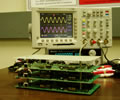
We are developing an experimental testbed that will be used to to better understand the practical aspects of cooperative communications. Our focus is on acoustic implementation through the use of the Texas Instruments TMS320C6713 DSK. The acoustic physical layer is motivated by the observation that one can easily replicate RF communications (at most common carrier wavelengths) acoustically by scaling all frequencies in the RF system by the ratio 340.3/3E8. This means that the results obtained in the ACCENT system can provide guidelines for the design and development of future RF systems. The acoustic network is also appealing in that acoustic transducers are simple and inexpensive and the inherently low data rates allow for real-time operation with low-cost hardware.
C6713 DSK RF Link
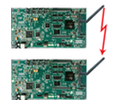
This project developed a reliable unidirectional radio frequency link to allow wireless data transfer from one TMS320C6713 DSK to another TMS320C6713 DSK. The link uses the GPIO ports on the DSKs and operates at 900MHz.
archived projects
TweetSign (2011-2012)
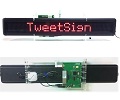
A team of two undergraduate students created a prototype of a scrolling LED sign with an embedded system capable of wirelessly interfacing with the Twitter social networking service. Configuration pages were created in the PHP programming language. Python was used to download information from Twitter and to interface with the scrolling LED sign. The TweetSign includes a variety of operating modes, including displaying tweets from a specified user, displaying tweets from random users around the world, and displaying current trending topics on Twitter. Click here for more details on this project.
educational signal processing platform (2009-2010)
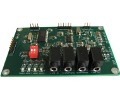
A team of two undergraduate students created a prototype, low-cost ($50) signal processing platform for use in the undergraduate real-time DSP course at WPI. The dsPIC-based platform provides an alternative to the more-expensive ($400) Texas Instruments TMS320C6713 DSK currently used in the undergraduate course. The prototype educational platform features Microchip's dsPIC33F microprocessor, an external audio ADC/DAC chip, and a DC-to-DC converter for optional battery power. The project team also developed a curriculum around the platform, including six laboratory assignments covering a variety of topics including FIR and IIR filter implementation, FFTs, and a simple pitch-shifting vocoder. The team also built and tested a printed circuit board of the final prototype, shown on the left. Click here for more details on this project.
linear and nonlinear speaker characterization (Samuel Brown - 2006)
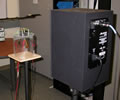
This project developed both linear and nonlinear characterization techniques for use with dynamic loudspeakers. These techniques were designed to provide insight into the effectiveness of specifications typically used to describe loudspeaker transfer characteristics. Provisions were made for non-idealities present in the measurement environment. Final results included one-dimensional plots of linear speaker response, and two-dimensional plots of nonlinear response. Suggestions were made for future experimentation and development.
digital acoustic software radio (2003-2005)
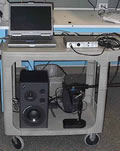
A team of undergraduate students developed an acoustic communication link using two laptop computers, amplified loudspeakers, microphones, and Matlab software for use as a demonstration and interactive learning tool in WPI ECE communication courses. Instead of transmitting electromagnetic signals, the communication link is acoustic in which allows students to actually listen the modulation by transmitting it through a speaker and receiving it by using a microphone.
The project team successfully developed an FSK communication system and tested the performance of the system at various distances and under various channel impairments.
This project was funded by the WPI CEDTA.
tuned electromagnetic resonator (TERC) speech sensor (2002-2004)
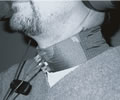
This project was funded by DARPA/NAVSEA and resulted in the development of a non-acoustic speech sensor to be used in a low-bit-rate speech encoding system. The overall goal of the ongoing program is to develop technologies to achieve low-bit-rate speech encoding (300 bits per second) with acceptable intelligibility in acoustically harsh environments. A key focus of the program is the use of noise-immune sensors in addition to microphone sensors to improve the intelligibility of the encoded speech in high-noise environments. Traditional speech encoders can be fooled by loud background noises and may not be able to accurately determine the key parameters of speech necessary to perform intelligible encoding. Noise-immune speech sensors can help the encoder by providing partial speech information uncorrupted by background noise.
Our contribution to this program was the development and testing of a new noise-immune sensor called the Tuned Electromagnetic Resonating Collar (TERC). The TERC sensor detects glottal activity that occurs during voiced speech by establishing a low-power electromagnetic field through the larynx and detecting the small changes in this field that are induced by movement of the vocal folds. Unlike some of the prior work in this area, the TERC sensor does not require direct skin contact or precise positioning to accurately sense glottal activity.
Our publications described the initial TERC sensor design and provided preliminary experimental results demonstrating the ability of the sensor to detect glottal activity in quiet and acoustically noisy environments. Our experimental results demonstrate that the improved TERC sensor can detect glottal activity up to the fourth harmonic and is also impervious to acoustic background noise.
We received some favorable press on the TERC sensor including articles in New Scientist magazine (April 9, 2005) and ABCNEWS.com (April 19, 2005).
building a cluster from low cost parts
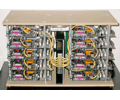
This project was an experiment in constructing a cluster from low cost parts. A 2 gigaflops system of 10 nodes, with 1.6 gigabytes of total RAM and 10 gigabytes of total hard drive storage was built on a 100 Mbps Ethernet network at a cost to the authors of approximately $450 (after rebates). A head node with a single hard disk is used to boot the remaining 9 diskless client nodes over the network. OpenMosix is used on a Debian Linux operating system to provide an easy to use and manage single system image clustering environment. The final ClusterFLOP is meant to be a proof of concept with results that are scalable to compete with larger-scale parallel computing systems.